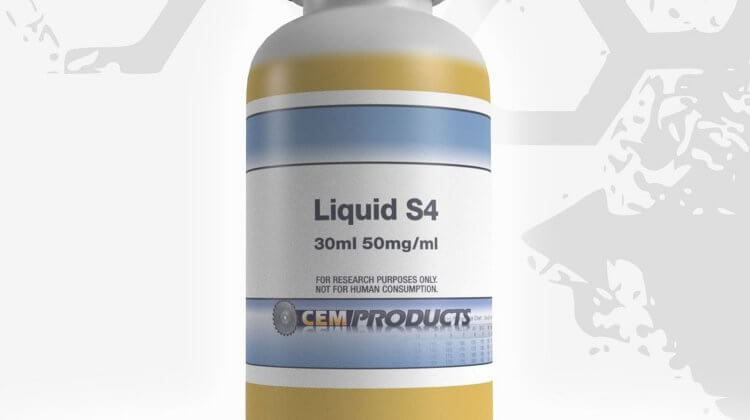
Discovery of nonsteroidal androgens.
Researchers:Dalton JT, Mukherjee A, Zhu Z, Kirkovsky L, Miller DD
Department of Pharmaceutical Sciences, College of Pharmacy, University of Tennessee, Memphis
Source:Biochem Biophys Res Commun. 244(1):1-4, 1998
Summary: An in vitro study was performed to assess the ability of non-steroidal compounds to bind with the androgen receptor (AR) and activate transcription. The compounds to be tested were derived from the structure of the anti-androgen R-Bicalutamide. The androgen receptors were prepared using the prostate glands of male Sprague-Dawley rats. Transcriptional activation was measured using transfected CV-1 cells.
In order to assess the binding affinity of these compounds, they were incubated in a medium containing androgen receptors. Each compound was tested in increasing concentrations until the minimum concentration that resulted in maximum receptor saturation was attained. Then the experiment was repeated using the high affinity ligand,3H-MIB. The concentration of each compound needed to completely saturate the androgen receptors was then compared to the amount of3H-MIB needed to do the same.
Theefficacy(i.e. maximal degree of AR-mediated transcriptional activity observed) andpotency(i.e. the lowest concentration of ligand able to induce maximal transcriptional activity) were determined by comparing the transcriptional activity induced by various concentrations of each compound to that of dihydrotestosterone (DHT). The efficacy of individual compounds compared to DHT was calculated by dividingthe maximal transcriptional activation observed for each compoundbythe maximal transcriptional activation observed for DHT. All experiments were performed in triplicate. Potency was reported as the lowest concentration of the ligand used during transfection experiments capable of producing maximal androgen receptor-mediated transcriptional activity.
Discussion:
First a few words about the study design. The methods used in this study are common when testing new drugs that bind with receptors. The easiest thing to do is simply put the drug in a medium containing the receptors and see how well they bind to them. Does this mimic anin vivoenvironment? Not exactly. But it does answer the question as to whether the drug will or will not bind to the desired receptor. In this study, the ability of these compounds to bind to androgen receptors, or their binding affinity, was compared to that of3H-MIB which is known to have a very high affinity for the androgen receptor. The efficacy, or ability of the compound to stimulate maximum transcriptional activity in intact cells, was compared to that of DHT which is thought to be the dominant compound by which androgenic activity is stimulated in the body. The potency, or the lowest concentration of ligand able to induce maximal transcriptional activity in intact cells, was also compared to that of DHT.
This study is the first to discover compounds that do not share the steroidal structure that are able to bind with the androgen receptor as an agonist for transcriptional activity. Remember that transcription is the first step in protein synthesis. It is sort of ironic that these compounds were created using the structure of knownanti-androgens. One particular compound named R-1 had very similar androgenic activity to that of DHT. Considering that testosterone has a binding affinity (to androgen receptors) that is only ~10- 50% that of DHT, where as several of these new non-steroidal compounds had affinities that were nearly identical to DHT, shows that these new compounds have tremendous potential in bodybuilding. Of course, data on dissociation rates were not provided. It is believed that the different dissociation rates of testosterone and DHT are responsible for the greater potency of DHT.
So why create drugs that act like steroids but aren’t steroids? Well, simply put, side effects and control. Many of the unwanted side effects of testosterone and its derivatives are a result of its structure. The ultimate goal in creating a ligand for the androgen receptor for myotropic activity would be to create a drug that has high binding affinity (i.e. similar if not greater than DHT) as well as a slow dissociation rate, and a low rate of hepatic clearance from the system. The inability of these drugs to be converted into estrogen is also a great advantage of their non-steroidal structure. Another advantage is half-life. In anin vitrostudy you cannot predict half life. However, there is no reason to doubt that the half-life of these compounds could be longer than that of testosterone and its derivatives. This would allow less frequent dosing and perhaps lower dosages. Finally, one must concede that any of the side effects that are a result of simple androgen activity may not be avoidable even with non-steroidal androgens. These side effects would have to be dealt with further down the line, after receptor activation.
Fortunately, the authors reported that they would continue to investigate these compounds as well as other newly synthesized compounds in their laboratory. They even went on to say that there are indications that efficacy and potency could be further increased with slight modifications to their existing structures. I will go out on a limb and say that the first non-steroidal androgenic/anabolic drugs will undoubtedly be a result of this study and those that follow from this lab. Stay tuned to MESO-Rx for further developments in the developments of these novel anabolics.
No replies yet
Loading new replies...
Join the full discussion at the MESO-Rx →